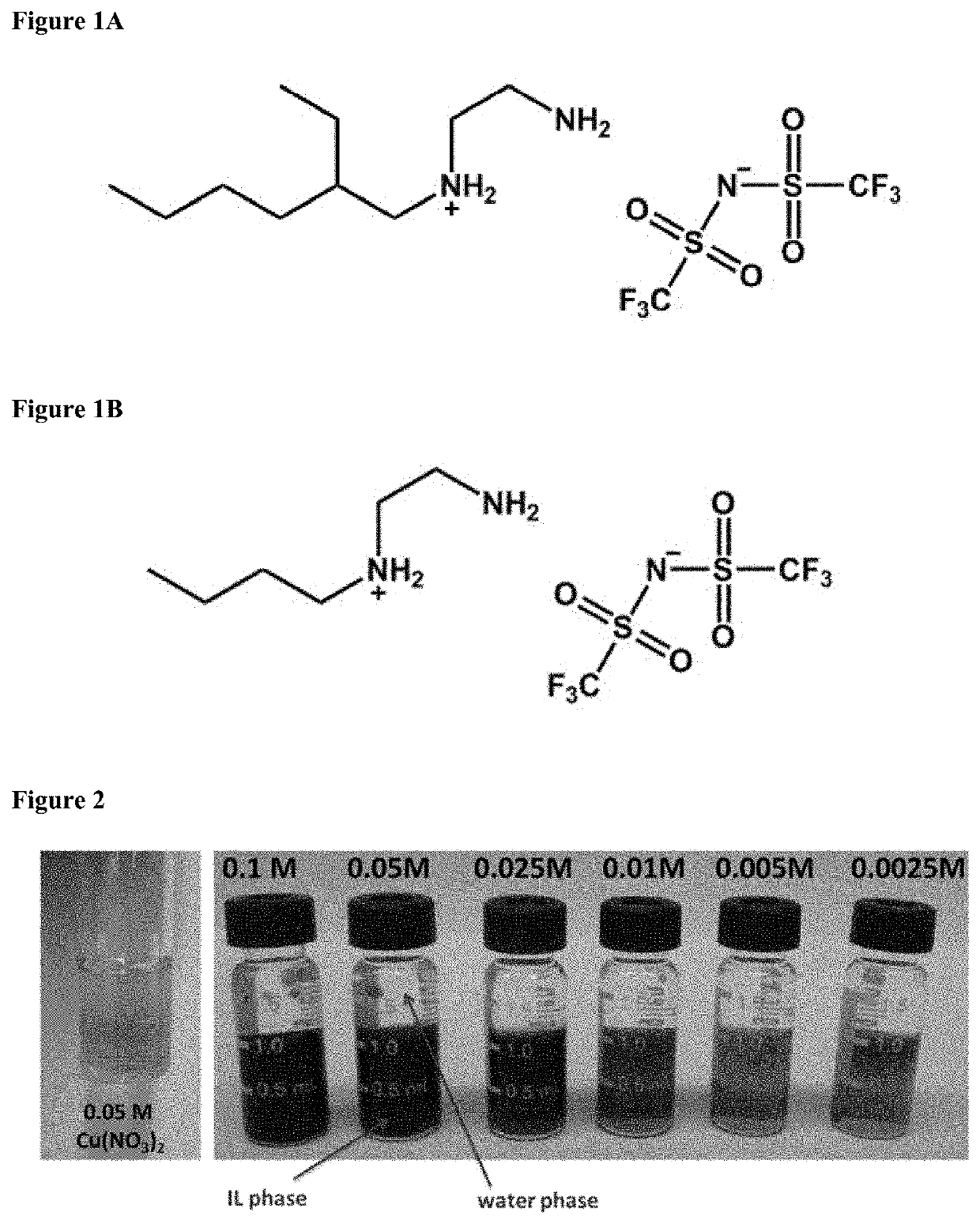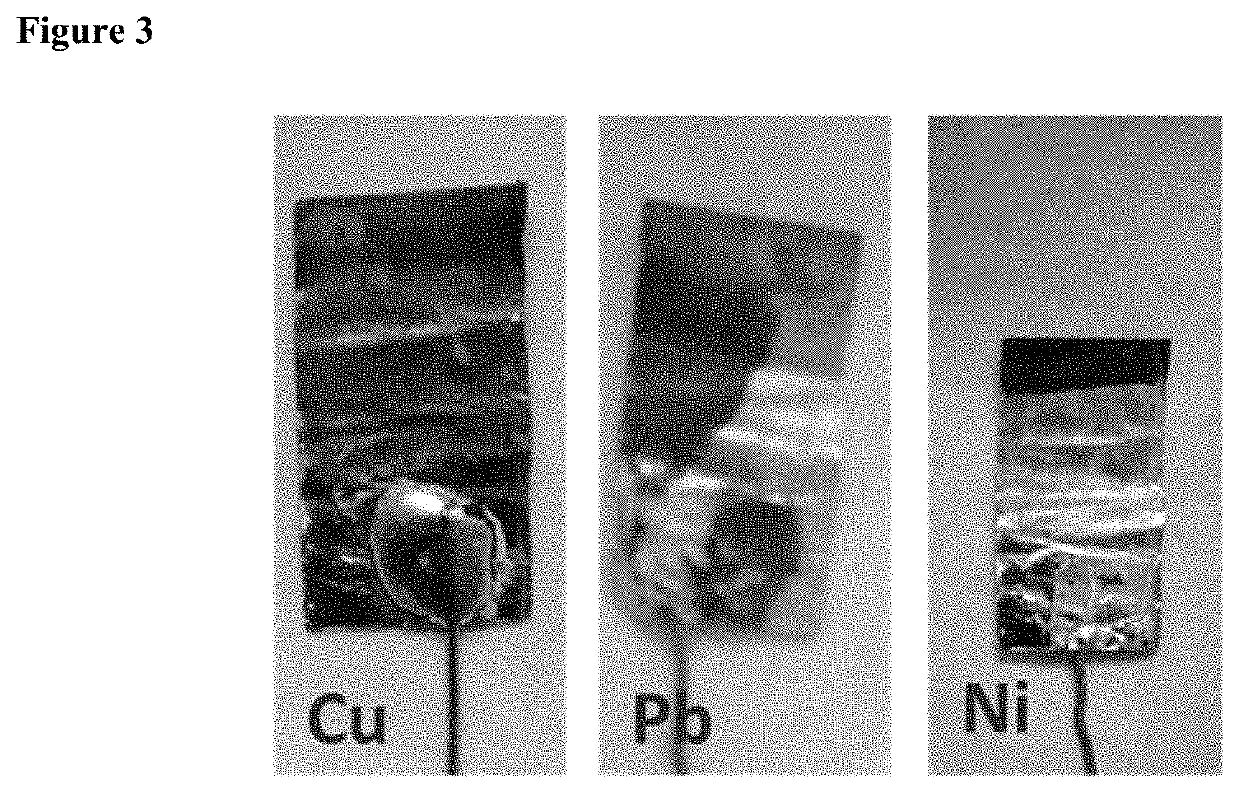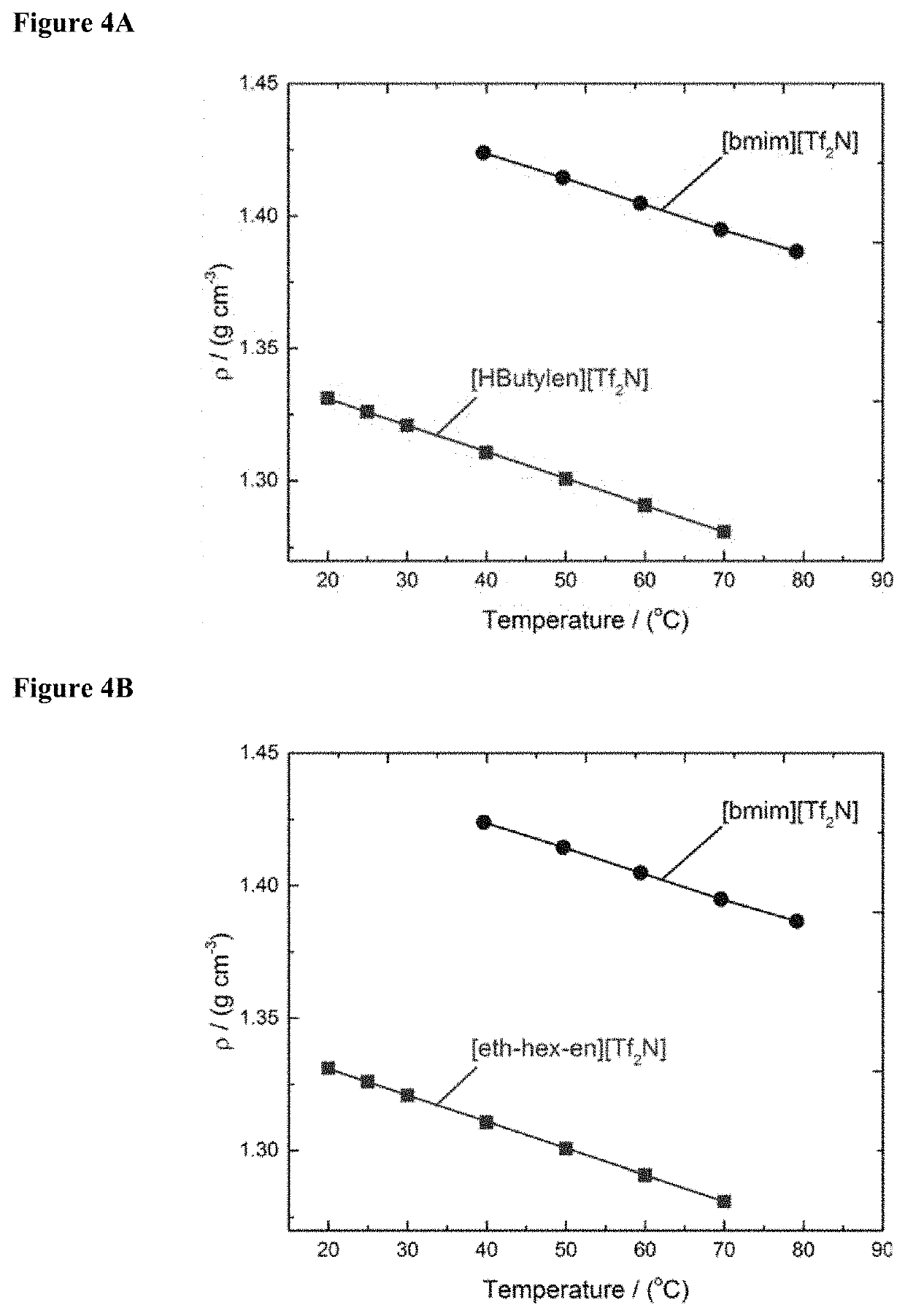Removal of metal ions from aqueous solution via liquid/liquid extraction and electrochemistry
- Summary
- Abstract
- Description
- Claims
- Application Information
AI Technical Summary
Benefits of technology
Problems solved by technology
Method used
Image
Examples
example 3
emical Measurements and Deposition
[0090]After removal of the aqueous phase and drying of the IL the chelated metals may be electrochemically deposited in order to recycle the IL. Electrochemical measurements were carried out using a VersaSTAT 3 potentiostat with VersaStudio software from Princeton Applied Research. Cyclic voltammetry was conducted in a standard three-electrode glass cell with Teflon coated carbon paper as the working electrode, 1 cm2 platinum plate electrodes as the counter electrode and a Ag|AgNO3 reference electrode. The ionic liquid electrolyte was purged with nitrogen with gentle stirring for 30 min and a nitrogen atmosphere was maintained during the electrochemical experiments. The temperature of the cell was controlled by immersing into an oil bath. Deposition experiments were performed using two-electrode chronoamperometry, with a potential difference of −3 V between the working carbon paper electrode and the working platinum electrode.
[0091]First a cyclic vo...
PUM
| Property | Measurement | Unit |
|---|---|---|
| Temperature | aaaaa | aaaaa |
| Temperature | aaaaa | aaaaa |
| Temperature | aaaaa | aaaaa |
Abstract
Description
Claims
Application Information
 Login to view more
Login to view more - R&D Engineer
- R&D Manager
- IP Professional
- Industry Leading Data Capabilities
- Powerful AI technology
- Patent DNA Extraction
Browse by: Latest US Patents, China's latest patents, Technical Efficacy Thesaurus, Application Domain, Technology Topic.
© 2024 PatSnap. All rights reserved.Legal|Privacy policy|Modern Slavery Act Transparency Statement|Sitemap



